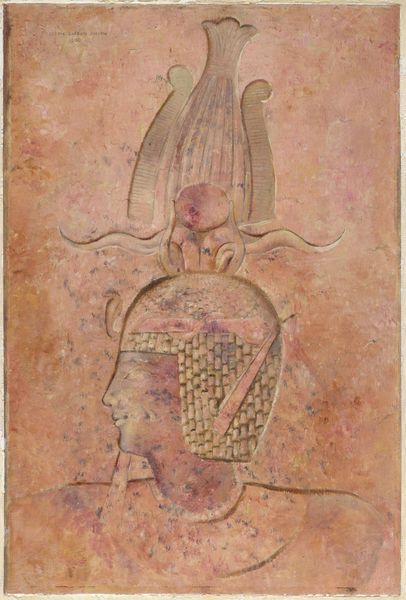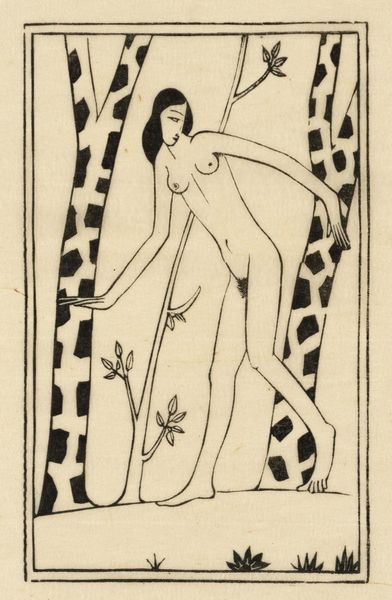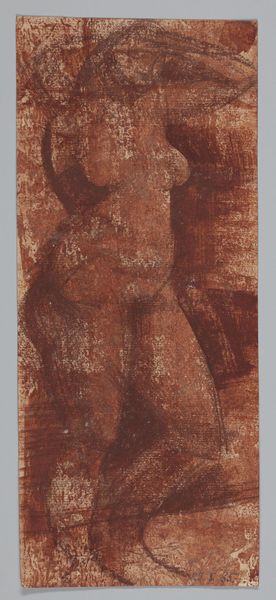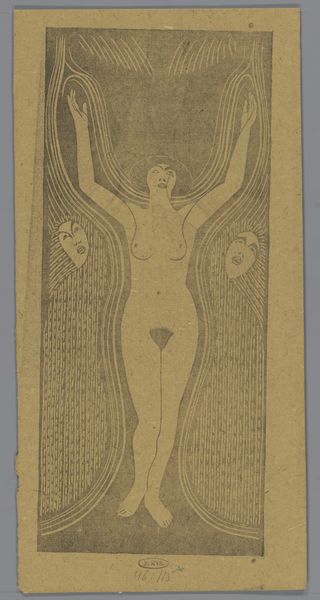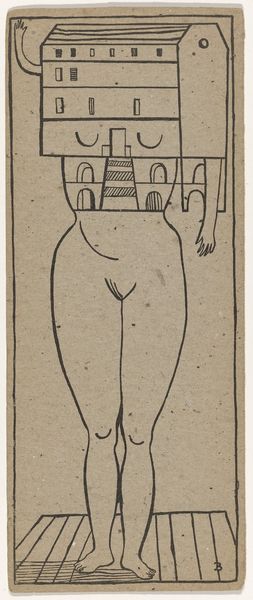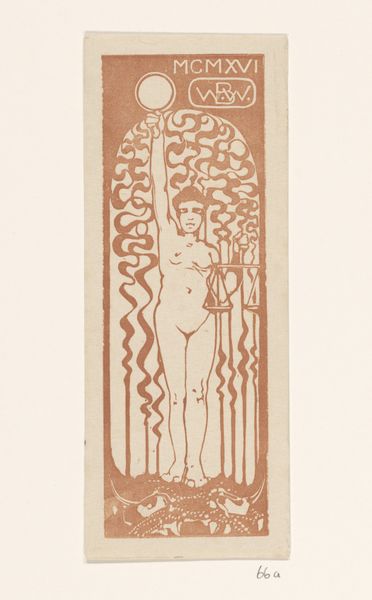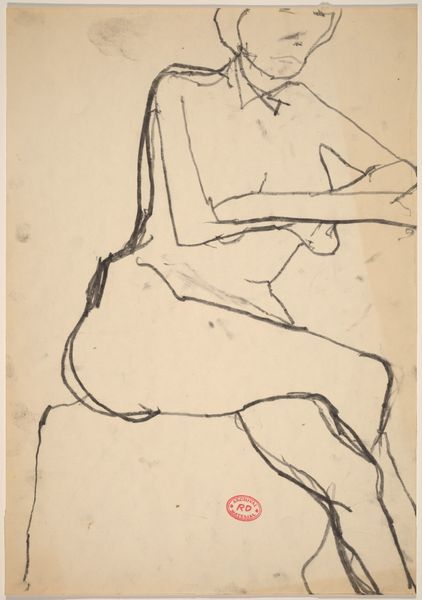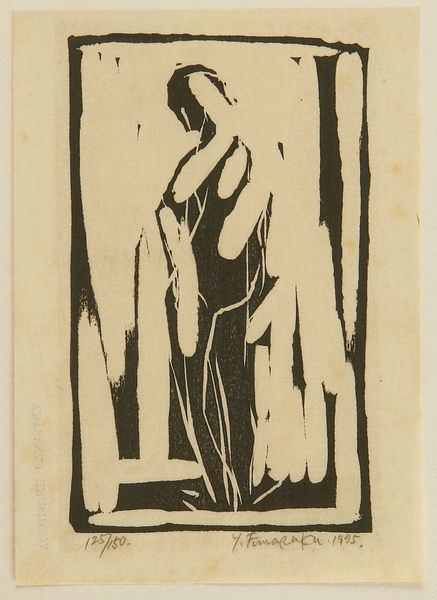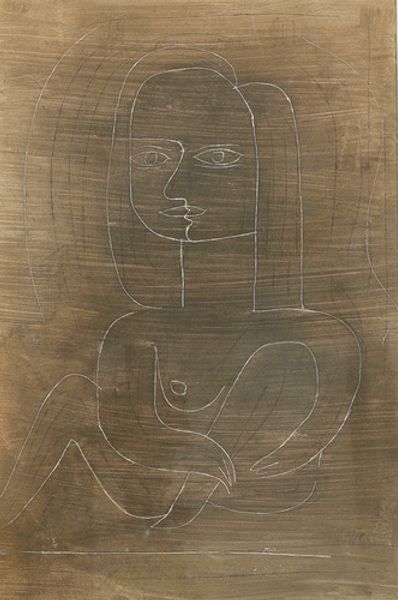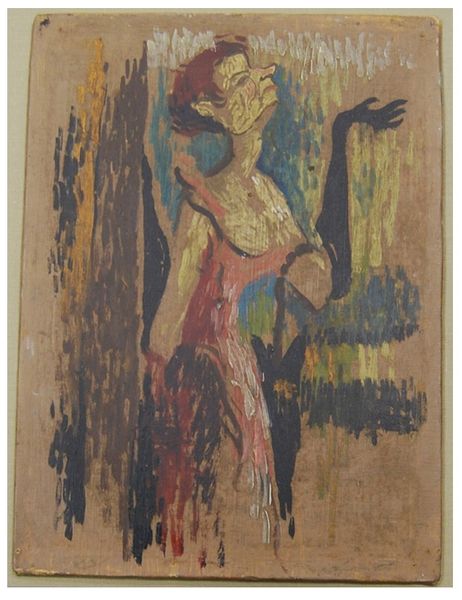
drawing, intaglio
#
drawing
#
intaglio
#
figuration
#
form
#
line
#
nude
Copyright: Anton Prinner,Fair Use
Editor: This intaglio print, called "Bare Woman in Profile and Tools," is by Anton Prinner, though we don’t know exactly when it was made. I’m immediately struck by how the figure is juxtaposed with all these tools—it feels almost like she's being dissected or objectified. What do you see in this piece, from a historical point of view? Curator: What I see is a powerful visual commentary on the objectification of women, prevalent throughout art history, but given new force in the 20th century with the rise of mass media. The arrangement, with the female form outlined sharply against a backdrop of rigid tools, evokes a clinical, almost surgical examination. Consider the tradition of the female nude within art history; Prinner's work subverts the male gaze by imbuing the image with a critical awareness of power dynamics. Does it challenge traditional representations of women? Editor: Definitely! It's almost as if Prinner is questioning the way women have been portrayed and used as objects throughout art history. The tools add a layer of almost violent… potential. Curator: Precisely. Think about the rise of industrialization and its impact on society's view of the human body—reducing it to mere function. What is he perhaps saying about women's roles in society at the time, with a focus on labor rather than beauty? Editor: That makes a lot of sense. I didn't consider the link between industrialization and objectification. It's much more than just a simple nude drawing now. I appreciate the shift in perspective, thinking about art's role in reflecting and challenging societal power structures. Curator: And understanding art is understanding society. We must continuously examine these narratives, consider context, and question assumptions if we are to move forward.
Comments
No comments
Be the first to comment and join the conversation on the ultimate creative platform.


